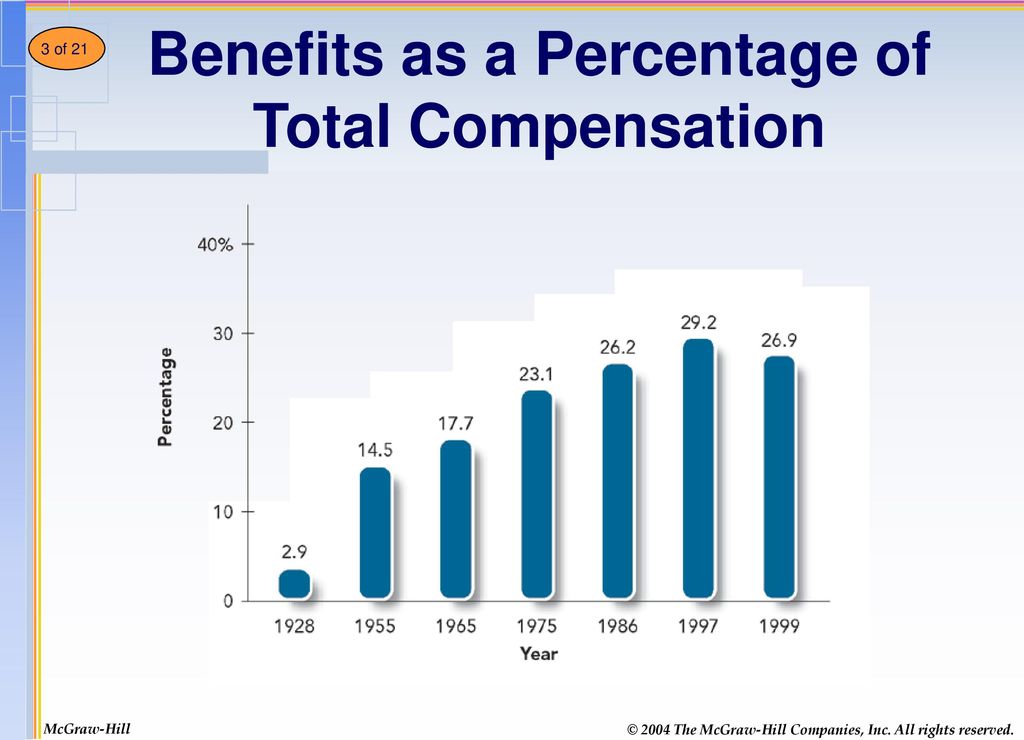Benefits as a Percentage of Salary
When it comes to employee compensation, salary is just one piece of the puzzle. In addition to the monetary component, companies often provide various benefits to their employees. These benefits, when expressed as a percentage of salary, can significantly enhance the overall compensation package. In this article, we will explore the importance of benefits as a percentage of salary and how they can contribute to employee satisfaction and retention.
Understanding the Significance
Benefits as a percentage of salary play a crucial role in attracting and retaining top talent in today’s competitive job market. Employees not only seek financial security but also value the additional perks that come with their employment. By offering a comprehensive benefits package, companies can demonstrate their commitment to employee well-being and create a positive work environment.
The Advantages of Benefits as a Percentage of Salary
Enhanced Total Compensation: When benefits are calculated as a percentage of salary, employees receive a higher overall compensation package. This can include health insurance, retirement plans, paid time off, and other valuable perks. By factoring in benefits, employers can provide a more accurate representation of the true value of an employee’s compensation.
Improved Employee Satisfaction: Offering benefits as a percentage of salary can significantly boost employee satisfaction levels. Employees feel valued and appreciated when they receive a comprehensive benefits package. This, in turn, leads to higher morale, increased productivity, and a more positive work culture.
Increased Retention Rates: Companies that provide attractive benefits as a percentage of salary often experience higher employee retention rates. When employees feel that their compensation is fair and competitive, they are more likely to stay with the company long-term. This reduces turnover, saves recruitment costs, and fosters a stable workforce.
Key Benefits to Include
Health Insurance: Offering comprehensive health insurance coverage is a vital component of any benefits package. It provides employees with access to medical care and helps alleviate financial burdens associated with healthcare expenses.
Retirement Plans: Including retirement plans, such as a 401(k) or pension scheme, allows employees to save for their future. These plans provide a sense of security and help individuals plan for a comfortable retirement.
Paid Time Off Providing generous paid time off benefits allows employees to maintain a healthy work-life balance. This can include vacation days, sick leave, parental leave, and holidays.
Flexible Work Arrangements: Embracing flexible work arrangements, such as remote work or flexible hours, can greatly enhance employee satisfaction. It promotes work-life balance and accommodates individual needs and preferences.

Benefits as a percentage of salary are a crucial aspect of employee compensation. By offering a comprehensive benefits package, companies can attract and retain top talent, enhance employee satisfaction, and foster a positive work culture. Remember to tailor the benefits to the specific needs and preferences of your workforce. Investing in employee well-being ultimately leads to a more engaged and motivated team, which positively impacts overall business success.
Frequently Asked Questions
1. What are benefits as a percentage of salary?
Benefits as a percentage of salary refer to the portion of an employee’s total compensation package that is allocated towards various benefits such as health insurance, retirement plans, paid time off, etc.
2. Why are benefits offered as a percentage of salary?
Offering benefits as a percentage of salary ensures that employees receive a fair and proportional share of their total compensation towards additional perks and welfare programs.
3. How is the percentage of benefits calculated?
The percentage of benefits is typically calculated by dividing the total value of the benefits package by the employee’s annual salary and expressing it as a percentage.
4. What are some common benefits included as a percentage of salary?
Common benefits included as a percentage of salary may include health insurance, retirement plans, dental and vision coverage, disability insurance, and various wellness programs.
5. Are benefits as a percentage of salary mandatory?
Benefits as a percentage of salary are not mandatory, but many employers choose to offer them as part of their overall compensation package to attract and retain talented employees.
6. Can the percentage of benefits change over time?
Yes, the percentage of benefits can change over time. Employers may review and adjust the percentage periodically to align with market trends, company policies, and budget constraints.
7. How do benefits as a percentage of salary affect take-home pay?
Benefits as a percentage of salary can reduce an employee’s take-home pay since a portion of their overall compensation is allocated towards benefits rather than being received as cash.
8. Do all employees receive the same percentage of benefits?
No, the percentage of benefits may vary among employees based on factors such as job level, years of service, and specific benefit plans offered by the employer.
9. Can employees negotiate the percentage of benefits?
Employees typically cannot negotiate the percentage of benefits since it is determined by the employer’s compensation policies and benefit plans.
10. Are benefits as a percentage of salary taxable?
Some benefits as a percentage of salary may be taxable, while others may be tax-exempt. The tax treatment depends on the specific benefit and applicable tax laws in the respective jurisdiction.




